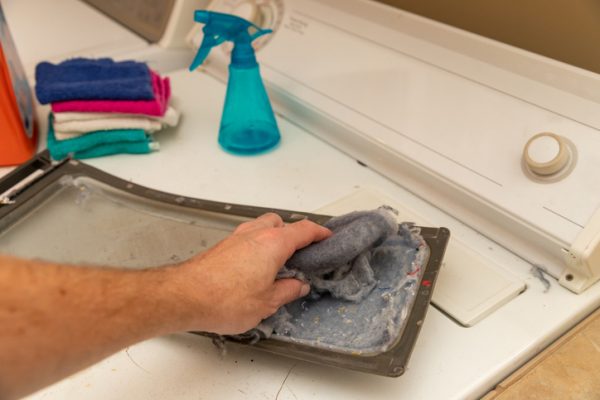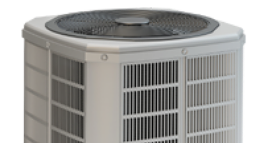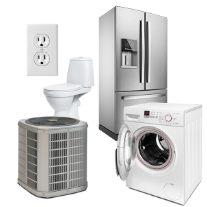Washer and dryer maintenance can do a lot of good for you. Proper maintenance could extend the life span of your washer and dryer. It could also reduce repair costs. Let’s walk through some easy and proper washer and dryer maintenance you can do yourself.
Maintenance Tips for BEFORE Each Use
Washer
- Use the right detergent. More isn’t always better. Check your washer’s manual to see which kind and how much detergent the machine requires. Using the wrong kind or too much detergent can cause premature breakdowns.
- Don’t overload. Don’t fill your washer more than three-quarters full. Wash heavy items like blankets and towels in smaller loads. Trying to jam all your clothes into one load is a no-win scenario. Your clothes won’t get as clean because they won’t have room to move and soak. Plus, the extra weight can cause stress damage to the washer’s motor and drum bearings.
- Adjust the load balance (if necessary). If your washing machine vibrates, shakes, or moves across the floor while operating, stop the cycle and redistribute the load more evenly.
Dryer
- Make sure laundry is clean before loading. This might seem obvious, but you should only put clean laundry in the dryer. Just because it’s wet doesn’t mean it’s clean. So, if you go to the beach and have wet towels or your clothes get wet from being outside in the rain or snow, resist the urge to just throw them in the dryer. This can make your dryer’s interior dirty and cause it to run less efficiently.
- Don’t overload. Overloading the dryer will prevent clothes from drying completely and force you to run multiple cycles. This can mean higher energy bills and shorter life spans. Overloading also puts extra strain on the dryer, which causes premature breakdowns. Worst of all, overloading can reduce air flow, which can start fires.
- Consider using wool dryer balls. To reduce drying time, try using wool dryer balls. Dryer balls can reduce drying times by up to 13%.
Maintenance Tips for AFTER Each Use
Washer
- Remove wet laundry ASAP. Removing wet laundry ASAP prevents mold and mildew buildup in the washer and on your clothes.
- Dry the inside. If you have a front-loading washer, dry the door and door gaskets (seals) after each use. If it’s a conventional top loader, leave the lid open to dry it out and prevent mold from forming.
- Rebalance your washer (if necessary). Check that all your washer’s legs are level on the ground. If they aren’t, place a level on your washer and adjust the lock nuts on the legs with a torque wrench to level it. (Note: The rear legs may be self-leveling. If so, you only need to adjust the front legs, lift the back of the washer a few inches and then set it down carefully.) You want to make sure that the legs cannot rotate once you’ve set it at the proper height. The proper height is when the washer doesn’t move when you rock it.
Dryer
- Clean the lint trap. Clean out your dryer’s lint trap after each load to ensure efficiency and prevent house fires.
- Wipe down the inside drum. Using a microfiber cloth, give the drum a quick wipe down to prevent lint buildup.
- Rebalance your dryer (if necessary). Follow the same instructions as for your washer.
Best MONTHLY Maintenance Tips
Washer
- Do an empty clean. Empty cleans can remove dirt and residue from your washer. Simply set your washer to the hottest setting and add the recommended amount of detergent according to the washer’s manual. Let it run with no laundry. Do this at least every 3 months.
- Check your gasket (seal). This is especially important for front-load machines. Clean your seals with hot water and vinegar. If you notice any tears or wear, replace the gasket to prevent leaks.
- Check your hoses. Look for any cracking, fraying, bulging, kinking or leaking. If they look damaged, replace them. If you have rubber hoses, consider replacing them with braided metal hoses to minimize bursts and leaks.
Dryer
- Clean the drum. Use a bit of rubbing alcohol and a microfiber cloth to wipe down the dryer drum. This will prevent lint buildup.
- Clean the interior vent. Disconnect the exhaust hose from the back of the dryer and run your vacuum cleaner at the exhaust hole to clear any debris.
- Deep clean your lint screen. Using soap and hot water, soak your lint screen. Use an old toothbrush to softly scrub residue. Repeat as needed. Then, dry the screen with a soft towel and let it air dry. Once it’s completely dry, reinsert.
- Check your vent cap. Check outside your house to make sure that your dryer’s vent cap (where the exhaust exits) isn’t blocked. Plant debris, animal nests and snow can block air from escaping. This can prevent your dryer from drying clothes efficiently or even start fires.
Best YEARLY Maintenance Tips
Washer
- Replace worn hoses. Typically, washer hoses need replacement every 3–5 years. To prevent leaks, bursts and water damage, replace rubber hoses with metal-braided hoses.
Dryer
- Clean the venting duct. If you can move your dryer away from the wall, you can clean your venting duct yourself. You’ll vacuum all entry and exit points, both inside and outside the house. Alternatively, you can hire a professional to clean it for you.
Proper washer and dryer maintenance can prevent breakdowns. But even with the best maintenance, your appliances will eventually break down. Before that happens, consider a systems and appliances home warranty from 2-10 Home Buyers Warranty (2-10). It can protect you against unexpected and expensive repairs or replacements.









